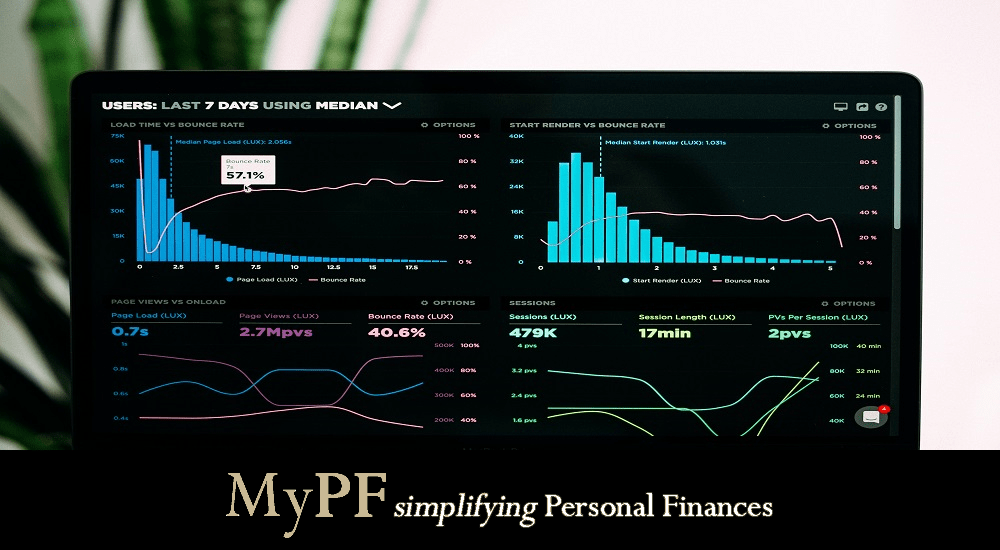Are you worried that the government is borrowing too much? Ease your worries by reading more here on what it is doing!
Government debt has constantly been talked about in the media and unfortunately heavily politicised in today’s discussions. Discussions of it revolves around how the government is spending too much and speculation on how the government is not able to repay its obligations.
However, more often than not, these discussions are not properly contextualised by data or what the government is trying to do with its debt. Hence, this article will be looking at how government debt has evolved throughout the years and what it actually consists of in terms of who is holding it, what currency is it denominated in mainly, when is it due, and what is it used for.
Read more below on how you can further understand the state of Malaysia’s government debt and whether you should be worried or not!
Contents
Our Data Source
The article utilises data from Bank Negara Malaysia’s Monthly Statistical Bulletin, in which the primary source is the Ministry of Finance. The types of data that are used include:
- Federal Government Debt: Table 3.1.4 – 3.1.6
- Federal Government Revenue: Table 3.1
- Federal Government Expenditure: Table 3.1.2 – 3.1.3
Fact #1: Government Debt is Mainly in Malaysian Hands and Not Foreign
You heard it right, most of Malaysia’s government debt is actually in the hands of Malaysians and not foreigners like many thought it was. To be precise, in 2020, local institutions, companies and ordinary Malaysians held about 76% of the government debt while foreigners held the remaining 24%. The total government debt amounted to RM880bn currently.
Have foreign holdings of government debt always been this low? Not exactly. In 2016, foreign holdings of government debt were at its peak of 32%, increasing from a 27% in 2011. Since then, local players have mainly held the majority of government debt where 2018 saw the largest drop in foreign ownership possibly due to the trade war that happened between the US and China.
So who are these local players that are holding the government debt?
Financial institutions which include banks, insurance companies, and other financial-related companies are the biggest holder of government debt at 36% of government debt. The Employee Provident Fund came in at second, holding about 24% of it. KWAP which is the public sector pension fund holds about 3%, while surprisingly Bank Negara Malaysia holds 2% of government debt. Bank Negara Malaysia normally does not hold that much of government debt as it has traditionally maintained about 0.7% of it only in the past decade.
Fact #2: Majority of Debt is Due in 5 Years or More
Currently in 2020, there is about RM609bn worth of government debt that has data on its maturity dates. The government has actively been trying to issue longer term government debt to manage its cash flows more effectively.
Hence, most of the debt currently is actually due quite a long time from now. About 61% of debt in 2020 is only due more than 5 years from now. Debt that is due more than 15 years has increased from 5% in 2011 to 18% in 2020. Meanwhile, debt below 5 years which are shorter term, has decreased from 51% in 2011 to 39% currently.
Is it a good thing that our debt has longer tenures? Generally, it is considered a good thing to have longer tenures as it enables the government to push the principal repayment further down the line. This reduces the pressure for it to repay its debt in the immediate time horizon and enables it to plan its cashflow much better.
That is part of the reason why the government has been pushing for longer tenure debts and loans but it can do so now because its credit rating has been stable in the past decade.
Fact #3: Government Debt Grew Strongly in the Early 2010s But Has Since Slowed Down
Make no mistake, Malaysia’s government debt has continuously grown in the past decade, tripling in size in just 12 years from RM306bn in 2008 to RM880bn currently. The period from 2008 to 2012 saw the highest growth in government debt, growing at an average yearly rate of 13.2%.
In just 4 years, government debt nearly doubled to RM502bn in 2012. The years after 2012 saw government debt grew slightly weaker at an average yearly growth rate of 6.8% from 2013 to 2019. However in 2020, to counter the Covid-19 recession, the government took on more debt where it grew 10.9% in that year.
Is this high or low? The one measure that is commonly used to evaluate this is the federal debt to GDP ratio which is calculated as below
Debt to GDP ratio = (Federal Government Debt / Gross Domestic Product)*100
For Malaysia, its debt to GDP ratio has been consistently around 50% to 55% in the past decade. The government imposes a statutory limit of 55% on the debt to GDP ratio but it is actually an arbitrary self-imposed limit. Recently, debt to GDP ratio has risen to 61%, in order to combat the recession. The truth is that it is hard to gauge whether this is high or not.
In data from Trading Economics, many of the advanced economies have debt to GDP ratio that exceeds 100%. Japan for instance has a whopping 266%, while the United States registers at 108%. In comparison to these countries, Malaysia does seem low. This is all a matter of perspective.
Fact #4: Most of It is in Malaysian Ringgit
Much of the Malaysian government debt is actually denominated in Malaysian Ringgit, and not foreign currency. About 97% of it is in Malaysian Ringgit, while 2% is in US Dollars and the remaining 1% is in Japanese Yen.
As the ringgit became more internationalised, the government made sure to issue more of its debt in ringgit over the years. In the early 2000s, only about 80% of its debt is denominated in ringgit. That proportion has gradually increased since then to above 95% by 2009.
Is this good or bad? It depends on how you look at it. Generally, it is considered good as the government mainly pays its debts in ringgit and thus is not exposed to fluctuations in foreign currency that could increase the amount it pays in the future.
However, the interest from foreign investors could be higher if debt is denominated in foreign currency. After all, most of them have more confidence in more established currencies such as the US Dollar, Euro, or Japanese Yen compared to the Malaysian Ringgit.
Fact #5: The Money is Used to Fund Investments for the Economy
Over the years, government debt has been used extensively to fund investments for projects that are regarded as important for the economy. Development expenditure averaged around RM47bn annually from 2010 to 2020, culminating in a total of RM517bn worth of investments by the government in the economy.
Most of it was actually invested in transportation projects such as LRT extension, MRT, MRT2, and ECRL, which encompass about 22% of total development expenditure. Education came in second at 14%, followed by the defense sector and trade and industry both registering 10%. The rest of it are invested mainly into public utilities (8%), agriculture and rural development (5%), social and community services (6%), healthcare (4%), and housing (3%).
Is this good or bad? Like always, it depends on how you look at it. Arguably, investments into transportation projects would improve the standard of living of Malaysians as it can reduce the commuting time and traffic congestion. Education is the core fundamental factor for the performance of the economy and is essential for all Malaysians. The rest of the sectors are deemed as also critical for the nation.
However, extensive government involvement in the economy has been criticized in the past as being bad for private businesses. After all, it is unfair competition considering that government is also the regulator and has access to much bigger financing.
Fact #6: The Government is Increasingly Relying on Debt to Finance Itself
In terms of government finance, governments “profit” has been consistently decreasing in the past decade, making it increasingly reliant on debt to fund itself. Government profit in this case is calculated by subtracting government expenditure from government revenue.
Government profit = Revenue – Expenditure
From 2001 to 2010, the government has consistently made about RM11.3bn in profits every year, giving it a strong financial position to undertake investments in the economy. However, from 2011 to 2020, that profit has drastically dropped to about an average of RM1.9bn every year. For context, in 2019, the government generated its highest revenue of RM264bn but only managed to have a profit of RM1.1bn.
What happened? The government has actually been incurring higher operating cost and expenditures throughout the years. Government expenditures grew at an average of 6.3% every year from 2010 to 2019, compared to 5.8% for government revenue.
Hence, in order to continue investing in the economy, the government has been using more and more government debt. This could be bad for Malaysia moving forward if the profits continue to drop and it has to rely on government debt instead to fund its operations.
Conclusion
Government debt has been on a rise in the past decade and is increasingly used to fund the government. While this is worrying, this needs to be contextualised by the fact that most of it is owned by local players and is denominated in Malaysian Ringgit. Majority of debt is only due quite long from now, and government debt growth has actually slowed down recently. Finally, the government still needs to invest heavily in the economy to improve its long term prospects.
Let us know in the comments below what you think about Malaysia’s government debt!













Leave A Comment